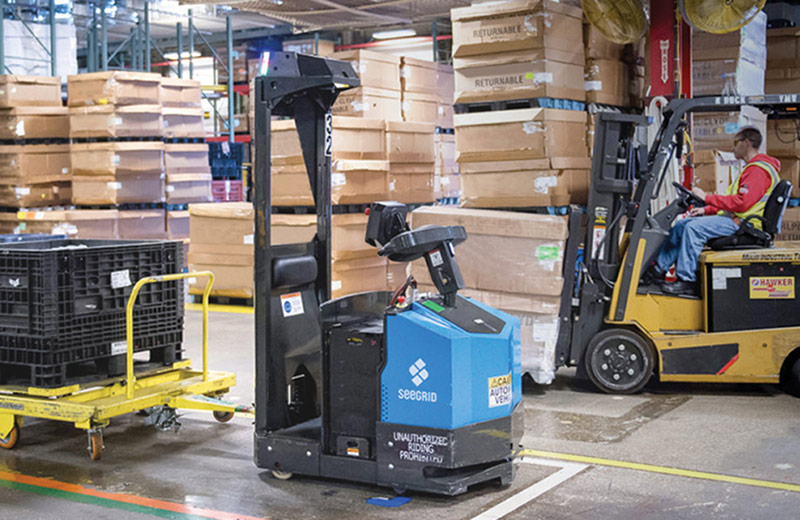Leasing is well established for conventional lift trucks, but with fully autonomous lift trucks, is robotics-as-a-service or “RaaS” going to become a dominant acquisition model?
There was a time when straight-up purchase was the dominant way to acquire lift trucks, but in recent years, leasing lift trucks is right up there with purchasing. According to Modern’s 2021 Lift Truck Survey, the buy/lease decision is almost evenly split, with 51% purchasing trucks and 49% leasing.
While lift truck leasing is well-established, is leasing the best means of acquiring fully autonomous lift trucks? These are, after all, technology laden, software-driven assets. That high level of technology could make RaaS an increasingly common method of acquiring driverless lift trucks.
Some providers believe the RaaS model is well suited to fully automated lift trucks, in that it bundles together key elements of a long-term solution for automating the handling of goods in pallets, including the robots, but also needed services, maintenance and upgrades, into one monthly fee.
For example, Seegrid, a provider of autonomous mobile robots (AMRs) for materials handling, including an AMR that is a fully autonomous lift truck, recently announced a RaaS option to go along with its existing buy and lease options. “The reason we offer all three is that we want customers to be able to buy using the method that is best for them,” says Jeff Christensen, vice president of product at Seegrid. “We don’t want to force them into a model that doesn’t suit what they are trying to achieve.”
One key thing that leasing and RaaS have in common is that they both reduce capital expenditures. Beyond that, says Christensen, with leasing, the lease can include a purchase option after the term of the lease is over, so the end user organization can still “own” the asset under leasing, whereas under RaaS, the vendor owns the robots.
The deeper differences, however, are around how RaaS bundles together key services, support and upgrades within one fee, rather than having to add those as options or when the need arises.
“The appeal of RaaS is sort of like an all-inclusive resort,” Christensen says. “By paying the subscription fee, we as the vendor are going to provide you with the maintenance, with services and upgrades—all those things that would be a la carte under buying or leasing models. It’s more of an all-inclusive model in which you don’t have to worry about adding those other elements.”
Seegrid’s RaaS offering includes its Palion AMRs, its software, upgrades, as well as maintenance and services, including periodic wellness checks. According to Christensen, the bundling of these elements under RaaS lessens risk and complexity, given the rapid pace of technological change with robotics. “These are essentially computers on wheels,” he says. “With the technology for AMRs advancing very rapidly, the RaaS model can be seen as a way of future-proofing your investment.”
While vendors should always ensure they provide customers with long-term value, Christensen adds that RaaS elements like ongoing wellness checks tend to more directly ingrain a long-term partnership approach. “You are essentially getting a partner with an Raas model,” he says. “The vendor has to provide value over the long term for the [RaaS] model to work.”
Seegrid isn’t the only vendor offering RaaS for autonomous lift trucks. Vecna Robotics, which has robots that can handle and lift pallets, also offers an RaaS option. The subscription model is well established for other technology solutions, most notably for enterprise software such as customer relationship management systems (CRM), transportation management systems (TMS), and warehouse management system (WMS) software.
Some vendors of smaller AMRs used for collaborative small item picking also offer RaaS. The buying teams for those types of solutions are well acquainted with the subscription model, and increasingly, so might most buyers of robotic lift trucks, given the level of fast-changing tech that goes into mobile automation for pallet/unit load handling.
Article topics









